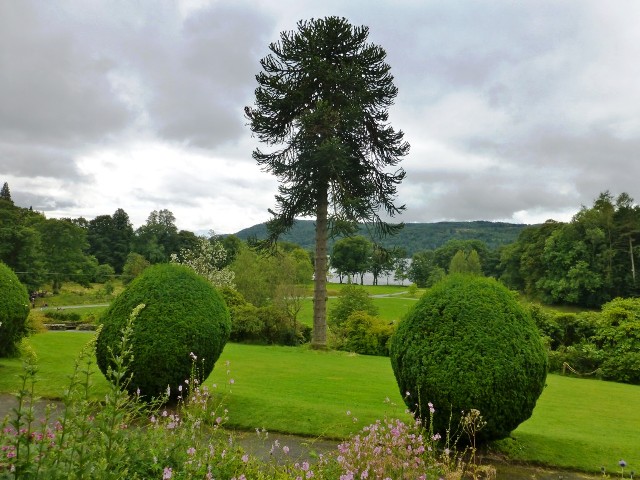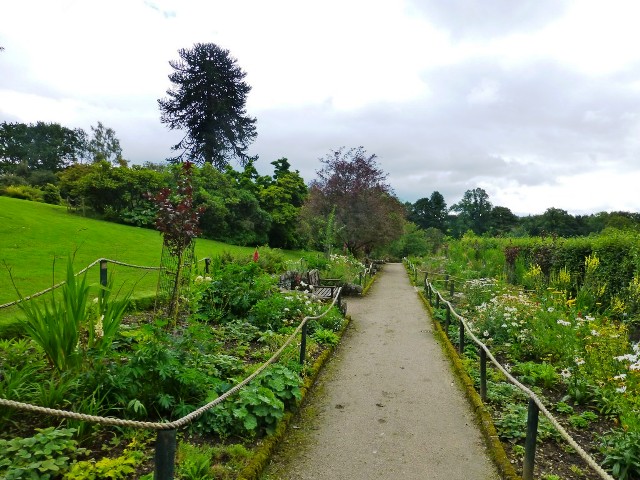by Lara Hurley of Landscape Information
The Lake District Visitor Centre at Brockhole is in a stunning location above Windermere. It is an Arts and Crafts house and has a garden that was originally designed by Thomas Mawson, a landscape designer who was the north-west’s answer to Gertrude Jekyll. The terraced garden was designed to take in the natural scenery, one of Mawson’s recurring design themes.
The importance of Mawson’s work is being increasingly recognised. He began life in Scorton, Lancashire and worked his way up from a nurseryman to become a renowned landscape architect and first president of the Landscape Institute in 1929. He travelled extensively, working on designs for the Peace Gardens in The Hague, projects in Canada and several gardens and parks in the UK, particularly in and around the Lake District.
Garden restoration work has been undertaken on several Mawson gardens; Rivington in Lancashire and The Hill in Hampstead being notable examples. Brockhole is the latest to undergo restoration. So far, this all sounds good. Restoration is a cosy word, redolent of antiques, care and consideration. But this is not the case for many gardens where ‘restoration’ more often than not means bulldozers, chainsaws and often environmental destruction back to the ‘pure’ original design. And yes, this can be justified in some cases but where do you draw the line? How pure should restoration be? How far back is it reasonable to go and is the removal of mature, healthy specimen trees justified? If we were to restore all the famous gardens of the UK back to their original plans, there wouldn’t be much to see. Most of our garden plants are introduced species and the gardens have evolved layers of interest through time. Remove all the layers at an English garden like Chatsworth, for example, and there would be no cascade, no rockery, no greenhouses, and no Brownian landscape. Just a house, a rectangular lake and some clipped box. Very…French.
Gardens evolve constantly. Plants grow, owners and their tastes change, new things are planted, some plants don’t grow where they were originally put, others grow too well. Designers realise this – they leave the client with the drawings and walk away like surrogate parents, relinquishing control, often knowing that their ‘baby’ will grow up under very different influences. Very few designs are ever implemented exactly as they are shown on the plan. Thomas Mawson, if he were alive today would be fully aware of this and would probably chuckle at the mature specimen of a monkey-puzzle that is growing handsomely in the view from the terrace. He notoriously detested monkey-puzzles, but the owners of the property planted one shortly after the garden design was completed, probably buying it from Mawson’s own nursery in Windermere. The planned garden restoration will remove this tree which has become a stunning specimen and much-loved feature in the grounds.
There is a group trying to protect the Brockhole monkey-puzzle and I too believe that it should stay. It is testament to the nature of clients, personal taste and the fashions of the time. It is contemporary with the design and has grown into a mature, statuesque tree. To fell it or any other tree just because the purity of a design will be compromised, is wrong. A more holistic approach to restoration that accepts some elements of change, respects the views of the public and the integrity of the environment as a whole should be taken.
Sign the petition: www.ipetitions.com/petition/save-the-brockhole-monkey-puzzle
Photo’s used with kind permission of Jonathan Denby of www.slow-life.co.uk/





























We will be staging a Demo this wednesday 24th October from 10am till 1pm at the Monkey Puzzle – please join us. Jonathon Denby will be joining us at 1pm.
more info:
Campaigners aiming to save the Brockhole Monkey Puzzle are going
to have a sit in/chain around the Monkey Puzzle tree this wednesday
morning from 10.00.
Jonathan Denby, president of the Lakes Hospitality Association will be
joining protestors at 1pm he has said : It’s as if they (the National
Park) were offended by the only remaining thing of beauty in the garden
and wanted to get rid of it, so that the whole place would look uniformly
drab..
Susan Fryer former head gardener and now Manager of National Trust Gardens and Countryside said :. this tree is not a tree anymore to me it has
become a potent symbol of the blatant disregard for the historic and
cultural heritage of the Brockhole site.
The National Park aim to fell this wonderful heritage tree after 17th Nov
– coming up to National Tree Week …. more like National Out Of Your Tree
Week!
Their reply to our request for a bat survey is that the contractor
carrying out the felling will do a check for bats…
English Heritage are being lobbied to oppose the felling or at least
urgently withdraw their “support” the more phone calls the Chief Executive
gets the better – call 020 7973 3247
A request has gone into Tim Farron to contact the Secretary of State to
issue a Tree Preservation Order. Previously the Secretary of State Eric
Pickles has refused, preferring to leave it to the National Park – who are
the TPO issuing authority. The same goes for South Lakeland District
Council and Cumbria County Council who have replied back to campaigners
basically saying that they do not want to tread on the Lake District
National Park Authorities toes by issuing a TPO on the Monkey Puzzle.
These are exceptional circumstances as the National Park are
propagandists, judge, jury and ambitious executioners. Their toes are
trampling all over Brockhole!
It is very sad to hear that this tree has now been felled – http://www.thewestmorlandgazette.co.uk/opinion/10035338.Felling_of_the_monkey_puzzle_tree_raises_questions/
This is a truly depressing story, one that raises so many questions about how ‘landscape’ is being abused by those meant to preserve it. And the loss of an internationally endangered tree by the decision and subsequent method to ensure its death by means which would be criticised as corrupt should it happen in any other country is shocking. http://www.kew.org/plants-fungi/Araucaria-araucana.htm